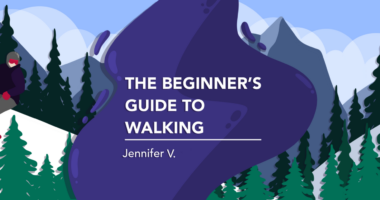How Air Travel Can Affect NMO Patients

At one point in my life, I thought I wanted to be a flight attendant. As a first-generation Canadian, my parents, who immigrated here in 1968, told me stories of foreign countries and the people, the unique food, and the different languages.
For most of my childhood, I grew up in a small community, and it was difficult. No one looked like me except my siblings and cousins. We stuck out in a crowd, and everyone knew we were related. So I had big dreams to travel and explore the world, to find other people who might look like me.
I knew early on that there were only three ways I could satisfy my wanderlust. I could become a flight attendant, work for a company that required regular travel, or make enough money to afford my dream trips myself.
I’m grateful that I married an amazing man who doesn’t balk at my wanderlust because he suffers from it, too. Now, even at the young age of 9, our daughter is also eager to see the world. She often requests time on a beach before a new toy or electronic. As a family, we’ve been fortunate enough to travel regularly, right until the pandemic shut down borders.

Jennifer relaxes on the beach in Puerto Morales, Mexico, in 2014. (Photo by Jennifer van Amerom)
Changes in atmospheric pressure
When I married Mike, we randomly selected Barcelona, Spain, for our honeymoon. Neither of us had been before, and as a huge fan of architecture, I knew I’d be satisfied on this trip. But it was only months after my neuromyelitis optica (NMO) diagnosis.
I wasn’t expecting my body to react the way it did, but the air pressure changes on the flight affected me in ways that terrified me. My feet swelled to an unrecognizable size, barely fitting into my sneakers. I couldn’t hold my carry-on bag to disembark the plane when we arrived. The back of my head throbbed with a pulse that vibrated and made it difficult to hear. That was almost 12 years ago, and since then, I have dreaded every flight. Not enough that I’ve avoided a trip, but enough that I’ve considered if it’s necessary to go.
A case report published in the journal Aviation, Space, and Environmental Medicine in 2013 suggested that changes in atmospheric pressure can affect those with neurological disorders, but results haven’t been conclusive enough to establish definitive rules for patients. So I took a quick, informal survey of other NMO patients in my network, asking them if flight travel affects them. I received mixed responses.
Some were like me, struggling with arm and leg extremities growing weaker as the flight went on, while other patients reported no change. A common theme did come up, though: Sitting for extended periods of time in small seats is difficult. Regardless of the flight length, the seats on planes are uncomfortable and cause back pain.
I can only handle air travel for four or five hours before the pins and needles slowly start to take over my body. I get squirmy in my seat, unable to find a position that doesn’t hurt while also obeying the flight attendants and staying buckled into the seat.
Thankfully, five hours is enough time to fly across the country or down south to enjoy the beach and get some natural vitamin C. Only once did my family and I find ourselves stuck on a plane due to a delay, adding an extra two hours. That was a difficult day.
Travel insurance
While it’s disheartening to always consider my illness before I travel, I still won’t let it dictate my life. I hope my condition remains stable while we travel; however, NMO is an ugly gremlin, riding on my back at all times. No one can predict when it will pounce and reveal its ugly self. So just in case, I always purchase travel insurance.
There are several carriers, and we even get some coverage through our credit card providers. However, for an extra $30-50 per trip, I have extra peace of mind that I can get a steroid treatment out of the country if necessary or change my flight and return home quickly.
As a standard practice now, I plan a recovery day for my body upon arrival at our destination, and again when we’re back home. In my mind, I can hit the ground running, but my body always has other plans. It requires a lot of catch-up time.
How does air travel affect you? Please share in the comments below.
Note: Neuromyelitis News is strictly a news and information website about the disease. It does not provide medical advice, diagnosis, or treatment. This content is not intended to be a substitute for professional medical advice, diagnosis, or treatment. Always seek the advice of your physician or other qualified health providers with any questions you may have regarding a medical condition. Never disregard professional medical advice or delay in seeking it because of something you have read on this website. The opinions expressed in this column are not those of Neuromyelitis News or its parent company, Bionews, and are intended to spark discussion about issues pertaining to neuromyelitis optica spectrum disorder (NMOSD).







